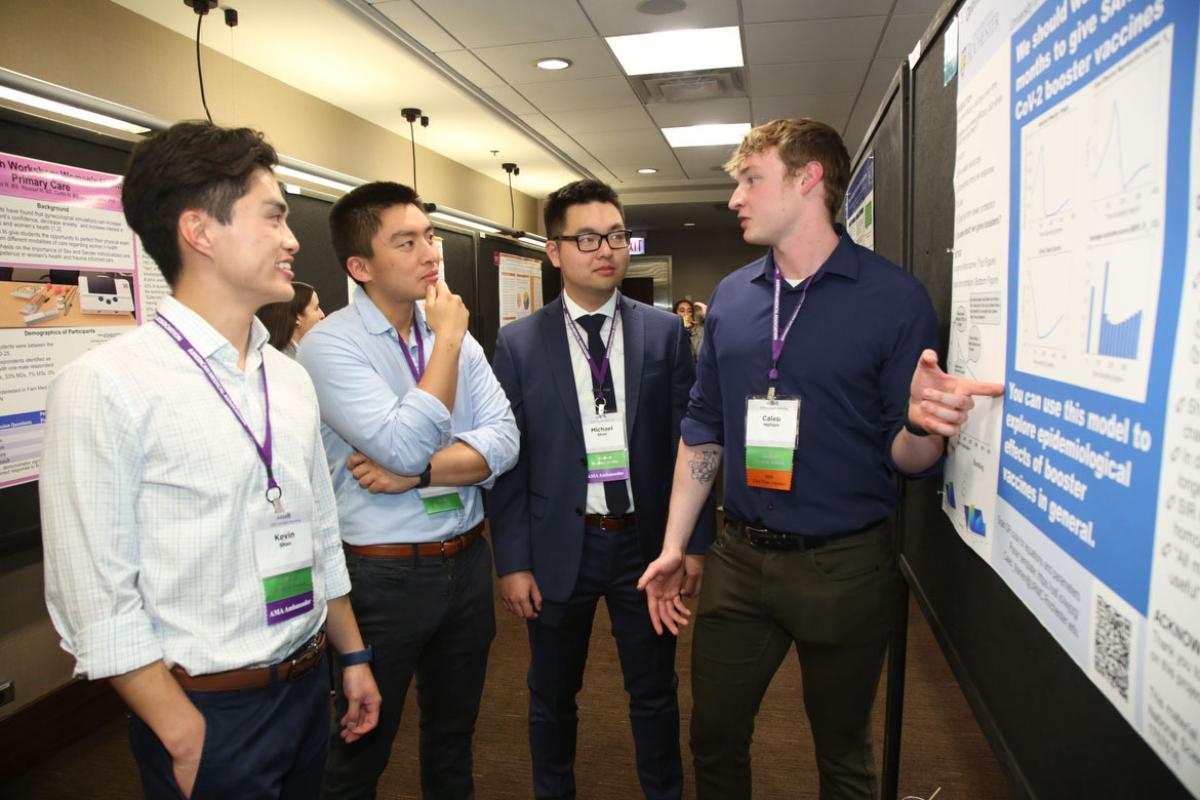Away rotations can offer medical students a valuable glimpse into a residency program—and give that same program a monthlong look at you. Still, “aways” can also be logistically tricky, financially draining and, depending on your specialty, perhaps superfluous.
For medical students navigating the Match process, deciding whether to pursue an away rotation—and how to get the most out of one—requires strategic planning and a clear sense of purpose. From the applying to lodging to maximizing your clinical experience, two program directors offered key insight into away rotations.
How do I set up my away rotations?
You will want to start researching potential programs where you would like to do away rotations earlier in your third year of medical school. Most U.S. medical schools and residency programs now use the Visiting Student Learning Opportunities (VSLO) program, which centralizes the application process. You’ll need clearance from your medical school to participate in away rotations, which often happens through your school’s VSLO administrator.
According to VLSO program data for the 2023–2024 academic year, most medical students submit their applications during the spring—typically between March and May. The average length of time between when a medical student submits an application and begins a rotation is between three and four months, so applying early is the best route to keep one’s options open.
The AMA helps medical students master the residency-application process so you can make the right decisions about your career, prepare for a knockout interview, explore residency opportunities—all so you can successfully match.
Dive deeper:
- Leaving the nest: The pros, cons of away rotations
- Residents offer key insight on away rotations
- How much do away rotations affect physician residency placement?
- What I wish I knew in medical school about away rotations
When should I begin my away rotation?
It is wise to complete your away rotations early in your fourth year, so you can list this new clinical experience on your residency applications for the Match and alleviate unnecessary pressure to scramble for rotations later in the year.
The optimal timing for completing away rotations tends to be before application’s go out in late September. Timing doesn’t always allow for the completion of aways before application submissions.
John Andrews, MD, is the AMA’s vice president for graduate medical education. A former pediatric residency program director, he said that doing a rotation early is optimal, but a later rotation, even one that is going on during interview season can still serve a purpose.
“Ideally you want them done before submitting your applications, but timing doesn’t always allow for that,” Dr. Andrews said. “I’ve seen students do an away in October then do an interview with a program in November, so the timing isn’t exactly set in stone.”
As applicants embark on the residency-selection process, no online resource contains as much information as FREIDA™, the AMA Residency and Fellowship Database®, which includes more than 13,000 Accreditation Council for Graduate Medical Education-accredited residency programs, and offers a streamlined user experience.
How do you find housing during away rotations?
Housing options will vary drastically by individual, region and the number of away rotations you pursue in one location. When possible, the most cost-effective way is to stay with someone you know, according to Kelli E. Krase, MD, director of the obstetrics and gynecology residency at the University of Kansas Medical Center.
“I have a lot of students who will try to go somewhere where they know someone and stay in somebody's house, room, what have you,” Dr. Krase, an AMA member, said during an episode of the “AMA Making the Rounds” podcast. “There are some additional sites that you can room-swap with other medical students. It’s sort of like an Airbnb, but specifically for away rotations.”
Dr. Krase also highlighted the importance of ensuring you have reliable transportation to and from your rotation site to avoid last-minute complications and extra expenses.
Dive deeper:
- Tips to act like an intern and ace your subinternship rotations
- Top questions to help master life as a fourth-year medical student
- 4 tricks to a successful residency program search
- Residency Match: 4 tips for writing a standout personal statement
How much will I spend on away rotations?
The expenses associated with away rotations can vary dramatically.
According to a post-rotation VSLO survey from the 2022–2023 academic year, the reported out-of-pocket away rotations costs among students were, as follows:
- Less than $500: 22.5% of medical students
- $500–$1,500: 30.7%
- $1,501–$2,500: 25.6%
- $2,501–$5,000: 17.4%
- More than $5,000: 3.8%
There may be programs—at both visiting programs and your home institution—that help defray the cost of away rotations with travel stipends and housing assistance. The best place to explore those options is through your medical school’s student-affairs office.
How will an away rotation affect me in the Match?
Away rotations are crucial because they can bolster your residency applications, especially if you are trying to match to a competitive specialty or a specific residency program. They offer a chance for program directors and faculty to gain a new perspective of you, which can benefit your application, depending on your performance during the away rotation.
Still, an away rotation isn’t going to guarantee you an interview, Dr. Andrews said.
“It’s an opportunity to get noticed,” he said. “Let’s say you have a below average score on Step 2, something else is going to have to get the attention of the program director. If you do an away rotation, you’ll meet the PD and that is likely going to mean they are going to take a careful look at your application.”
Dr. Krase offered that students who made a strong impression often did so by integrating into the team, helping third-year medical students and engaging in extra opportunities such as call shifts.
Do I really need to do an away rotation for residency?
The decision to commit to away rotations really depends on your background and strengths and the specialty to which you plan to apply. Before you apply for an away rotation, be sure to consider how it aligns with the overall competitiveness of your application.
According to a survey of graduating medical students conducted by the Association of American Medical Colleges, 51.8% of all 2024 survey respondents said they participated in away rotations. Additionally, 20.8% of 2024 graduates did one away rotation and 30.7% reported two or more away rotations.
“Not every student needs to do an away,” Dr. Krase said.
“Some students need to do an away because the specialty that they're interested in or they're thinking about isn't available at their school,” she added. “Some students should do aways when they have a specific place that they're really interested in going to, and then other students who are interested in some more of the more competitive subspecialties or specialties really are highly encouraged to do aways as well. Those are the kind of groups of people that really benefit from aways.”




